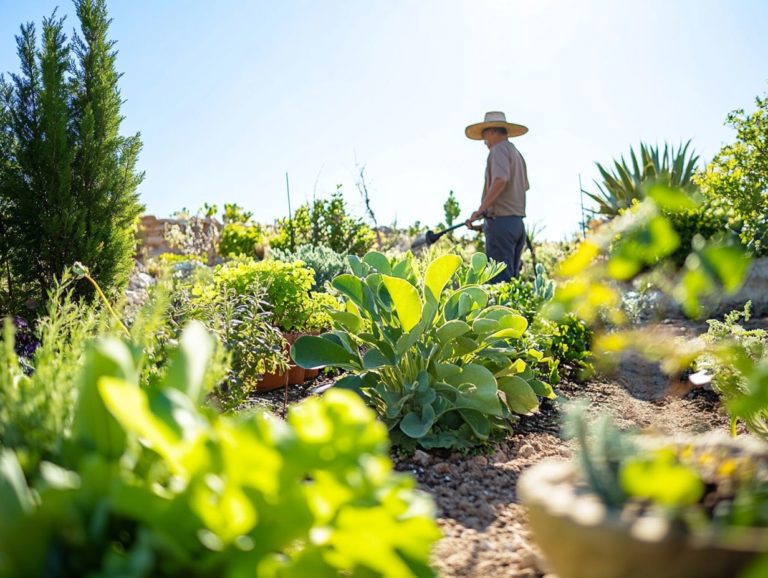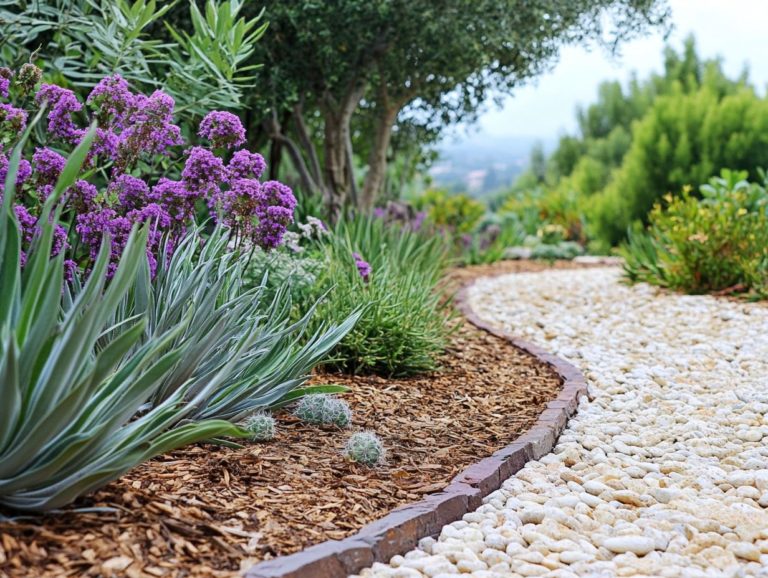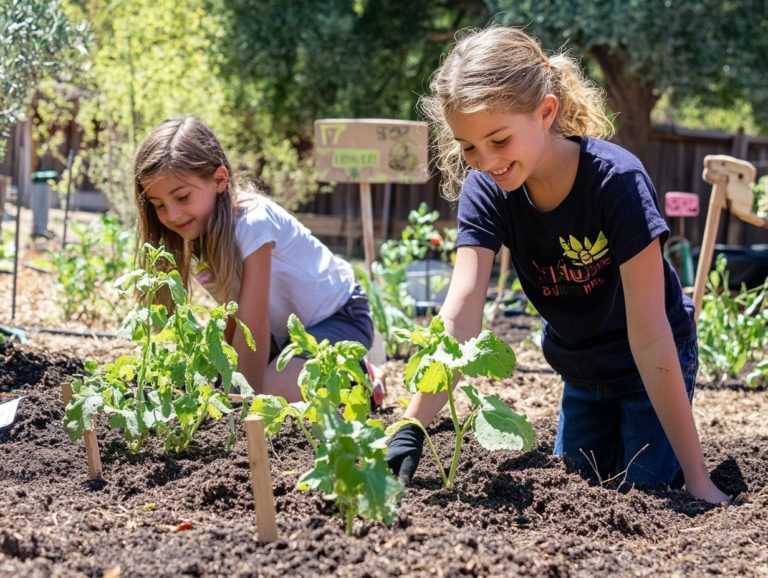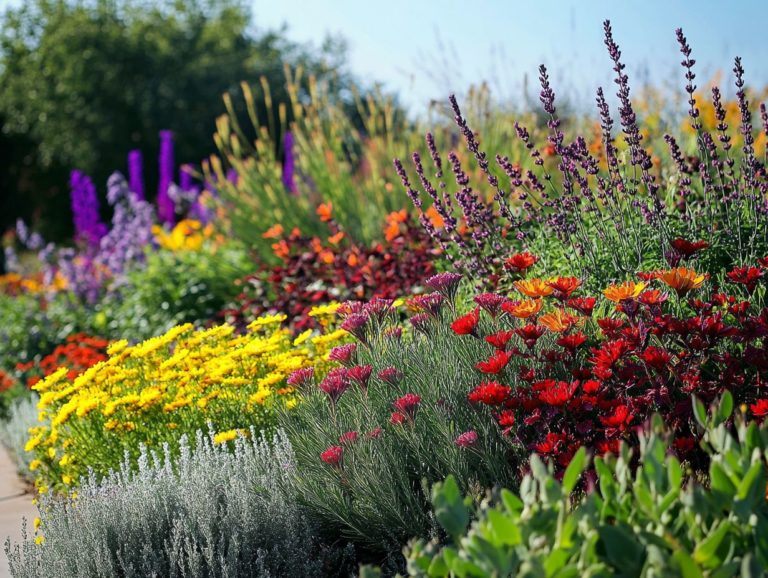How to Use Greywater in Drought Gardening?
In an era where water shortages are becoming more pronounced, you’re likely seeking sustainable solutions to keep your plants flourishing. One effective approach is utilizing greywater, an eco-friendly method for recycling household water from your daily activities.
This article explores the benefits of greywater in drought gardening, outlines various greywater systems for collection and use, and provides essential precautions for safety.
Whether your goal is to conserve water or cut down on gardening expenses, you will find practical tips for incorporating greywater into your gardening routine and optimizing your irrigation practices.
Contents
- Key Takeaways:
- Understanding Greywater
- Benefits of Using Greywater in Drought Gardening
- Types of Greywater Systems
- Precautions for Using Greywater in Gardening
- How to Incorporate Greywater into Your Garden
- Frequently Asked Questions
- How to Use Greywater in Drought Gardening?
- What are the benefits of using greywater in drought gardening?
- How do I collect greywater for my garden?
- What plants can I water with greywater?
- Do I need to treat greywater before using it in my garden?
- Are there any precautions I should take when using greywater in my garden?
Key Takeaways:
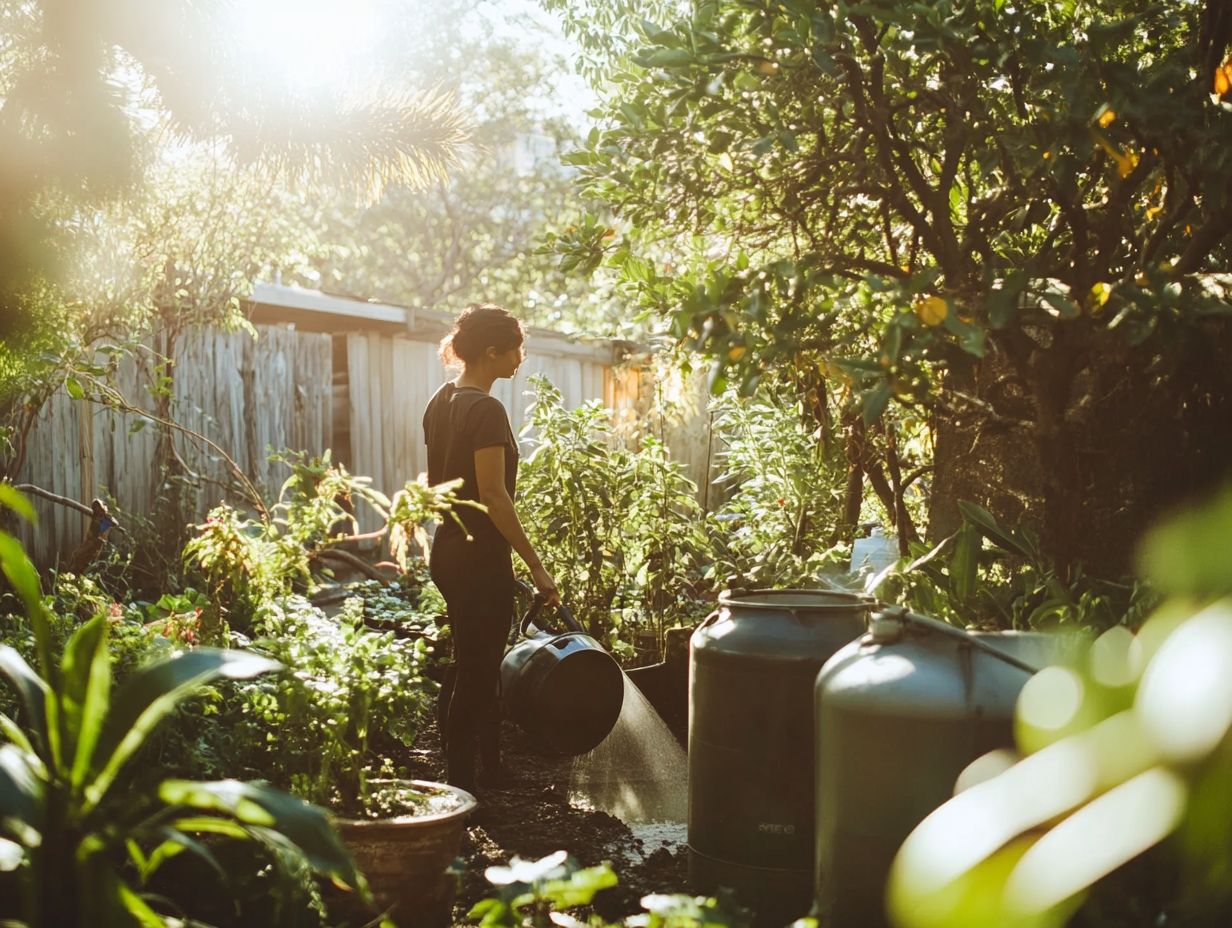
- Greywater is any household wastewater that is not contaminated with human waste and can be reused for gardening.
- Utilizing greywater can help conserve water and save money on utility bills.
- Before using greywater in your garden, consider health and environmental precautions and properly set up a greywater system.
Understanding Greywater
Understanding greywater is essential for elevating your sustainable landscaping efforts, especially in areas like Oregon, where water shortages and resource management are pressing concerns.
Greywater the recycled household water from baths, sinks, and laundry differs from blackwater, the wastewater generated from toilets. This distinction helps you set up greywater systems safely and effectively, allowing you to follow environmental rules while protecting valuable water resources for future generations.
What is Greywater and How is it Different from Blackwater?
Greywater is the relatively clean wastewater from everyday activities, such as bathing and washing dishes. In contrast, blackwater contains human waste and is more contaminated.
Recognizing this difference is vital for managing water resources sustainably. Sources of greywater include sinks, showers, and laundry, which carry significantly lower risks of harmful pathogens compared to blackwater.
However, greywater can still contain contaminants like soap residues, food particles, and oils, as well as salts and boron. Therefore, proper treatment is essential before using it for gardening and irrigation.
Safe applications involve techniques such as filtration and natural treatment systems like mulch basins and constructed wetlands that effectively reduce potential hazards, allowing you to reuse this valuable resource while promoting healthy plant growth and enhancing soil health.
Benefits of Using Greywater in Drought Gardening
Using greywater in gardens offers numerous advantages, especially in arid regions where water conservation is essential for maintaining plant vitality and supporting robust growth.
By utilizing greywater, you can nourish both edible crops, like fruit trees, and ornamental plants, effectively combating drought while promoting sustainable gardening practices and improving your landscape design.
Water Conservation and Cost Savings
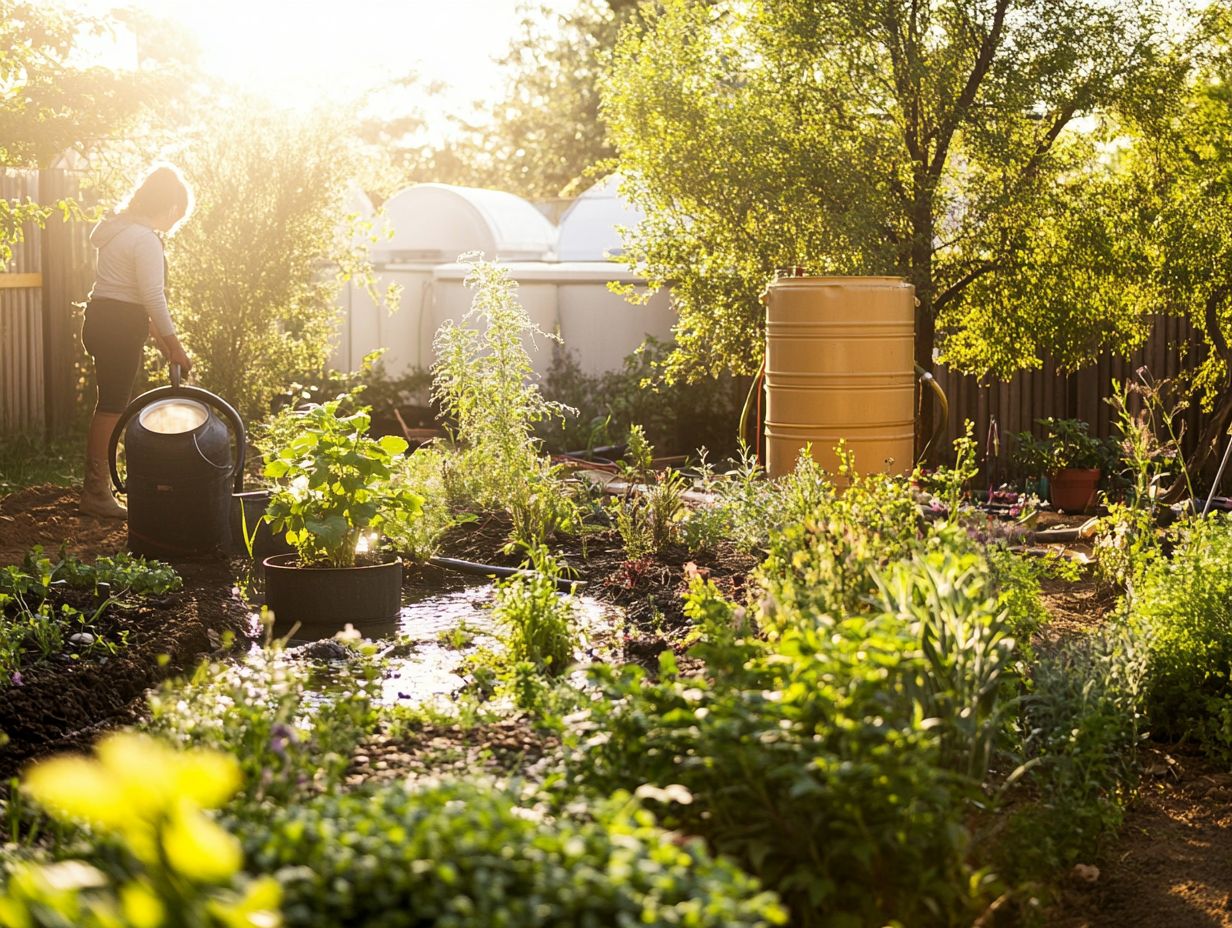
Implementing greywater systems not only encourages water conservation but also provides significant cost savings for households relying on municipal tap water for irrigation.
By using treated greywater from baths, sinks, and laundry, you can significantly lower your water bills while easing the demand on local water supplies. This dual benefit enhances your household budget and positively impacts the environment by reducing the amount of wastewater entering treatment facilities.
A study in California found that homes with greywater systems reduced their water usage by up to 50%, showcasing remarkable efficiency and value. Additionally, sustainable landscaping practices using greywater improve soil health and plant resilience, highlighting the extensive benefits of this innovative resource management approach.
Take action today and start incorporating greywater systems into your gardening practices for a more sustainable future!
Types of Greywater Systems
You ll find a range of greywater systems tailored for residential use. Each system is designed to meet diverse needs while adhering to environmental regulations that safeguard public health and the ecosystem, ensuring sustainable practices.
Whether you prefer a straightforward, bucket-based approach or a more sophisticated engineered solution, these innovative systems facilitate efficient greywater reuse for irrigation and landscaping. You can make a sustainable impact right in your own backyard.
Overview of Different Systems and Their Uses
Greywater systems come in a fascinating array of designs and implementations. Some are as simple as a basic drainage solution, while others feature simple filtering techniques that ensure safe reuse for irrigation.
Among the various approaches, diversion systems stand out for their straightforward design. They channel water from sinks, showers, and laundry directly to storage tanks, making it easy for you to nourish your garden plants.
On the flip side, constructed wetlands mimic natural filtration processes. They effectively purify the wastewater while nurturing a diverse array of plant life and helping with nutrient recycling.
Then there are gravity-fed systems, which cleverly utilize the natural slope of the land to move water efficiently. These systems are particularly effective in rural settings where gravity does the heavy lifting, making them perfect for collecting runoff from baths and sinks.
Each of these systems promotes sustainability and enhances the overall health of your garden, giving you the power to transform what could be wasteful water into a valuable resource for thriving plants.
Precautions for Using Greywater in Gardening
While greywater can serve as a valuable resource for your gardening endeavors, it’s crucial to take smart precautions to protect your health! Addressing health risks and environmental concerns is vital.
Understanding the potential contaminants and the possibility of bacterial growth is crucial for ensuring that the greywater you use is safe for your plants. This is especially important when using cleaning products that break down naturally.
Health and Environmental Considerations
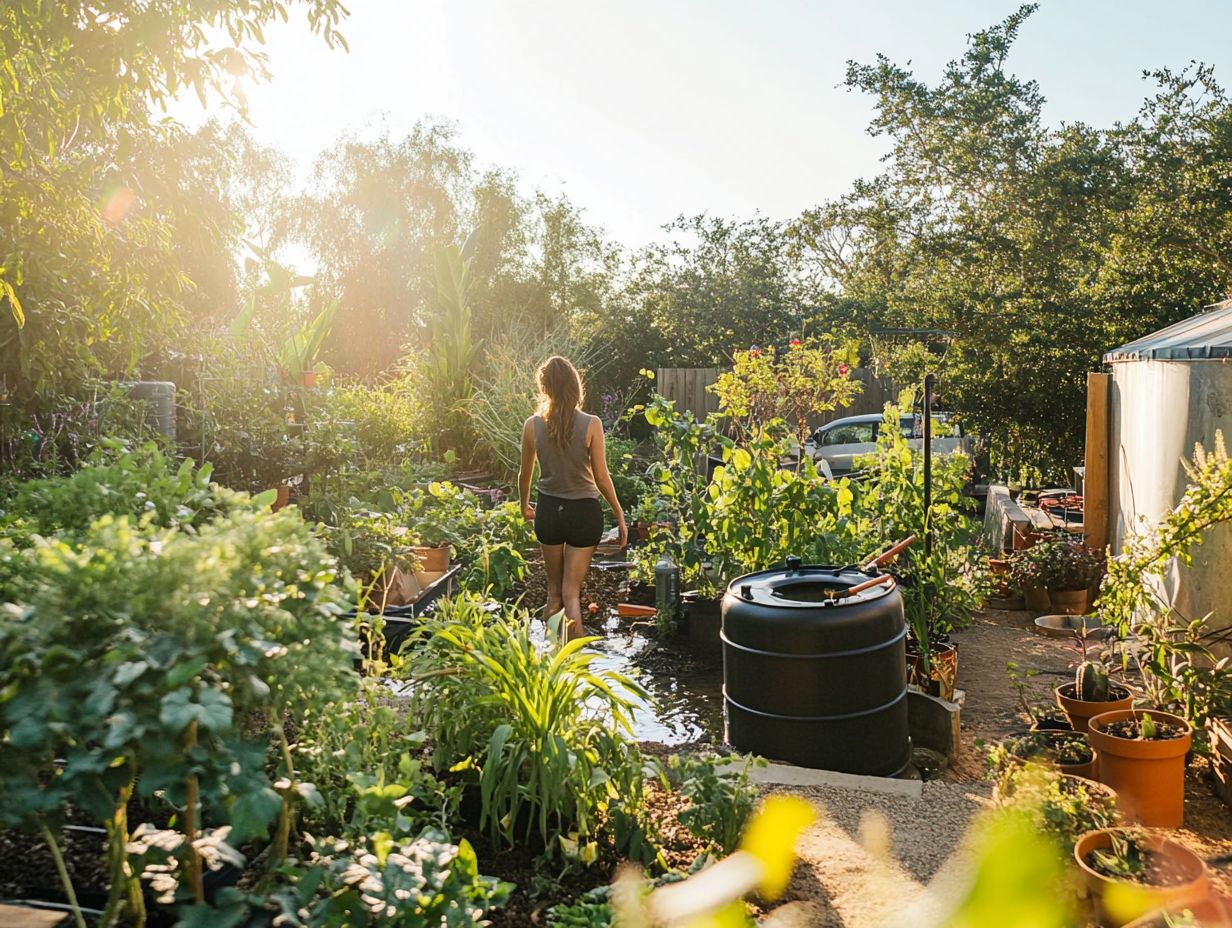
When utilizing greywater for your gardening endeavors, it’s essential to remain vigilant about health-related concerns. This includes contaminants and microorganisms that could negatively impact both plants and human health.
These issues can facilitate the transmission of micro-organisms, posing risks such as gastrointestinal illnesses or skin infections if individuals come into contact with contaminated plants or soil. Greywater may also introduce harmful substances, including soap residues and excess nutrients, which can lead to soil contamination over time.
To foster a safer gardening environment, it s imperative to embrace treatment methods such as filtration and disinfection processes. Techniques like settling ponds, constructed wetlands, and UV treatment can significantly reduce harmful pathogens, creating a healthier ecosystem where your plants can flourish without compromising safety.
How to Incorporate Greywater into Your Garden
Incorporating greywater into your garden demands meticulous planning and execution. You’ll want to ensure that your system fulfills the specific water requirements of your plants and adheres to local regulations.
By adopting a step-by-step approach, you can navigate the process of establishing an effective greywater irrigation system with confidence and precision.
Step-by-Step Guide for Setting up a Greywater System
Setting up a greywater system, which is wastewater from sinks, showers, and laundry, involves several important steps. Your goal is to ensure compliance with environmental regulations, obtain the necessary permit, and promote safe water reuse for irrigation. Join the movement to reuse water and create a sustainable garden!
To kick off this process, you’ll need to select the appropriate system based on the types of greywater sources at your disposal, whether it s laundry, bathtub, or sink water. Installation methods can vary; you might opt for direct plumbing connections or take the simpler route with a diverter valve setup.
Once your system is in place, thorough testing is essential to confirm that it operates safely and efficiently, minimizing any contamination risks to your plants.
Regular maintenance like checking filters is essential for your garden’s success. Inspecting drainage routes will significantly contribute to the long-term water-saving success of your garden while ensuring your plants receive the right amount of water to meet their needs.
This ensures your plants receive consistent nourishment while you conserve those precious resources.
Frequently Asked Questions
Curious about using greywater? Here are some common questions answered:
How to Use Greywater in Drought Gardening?
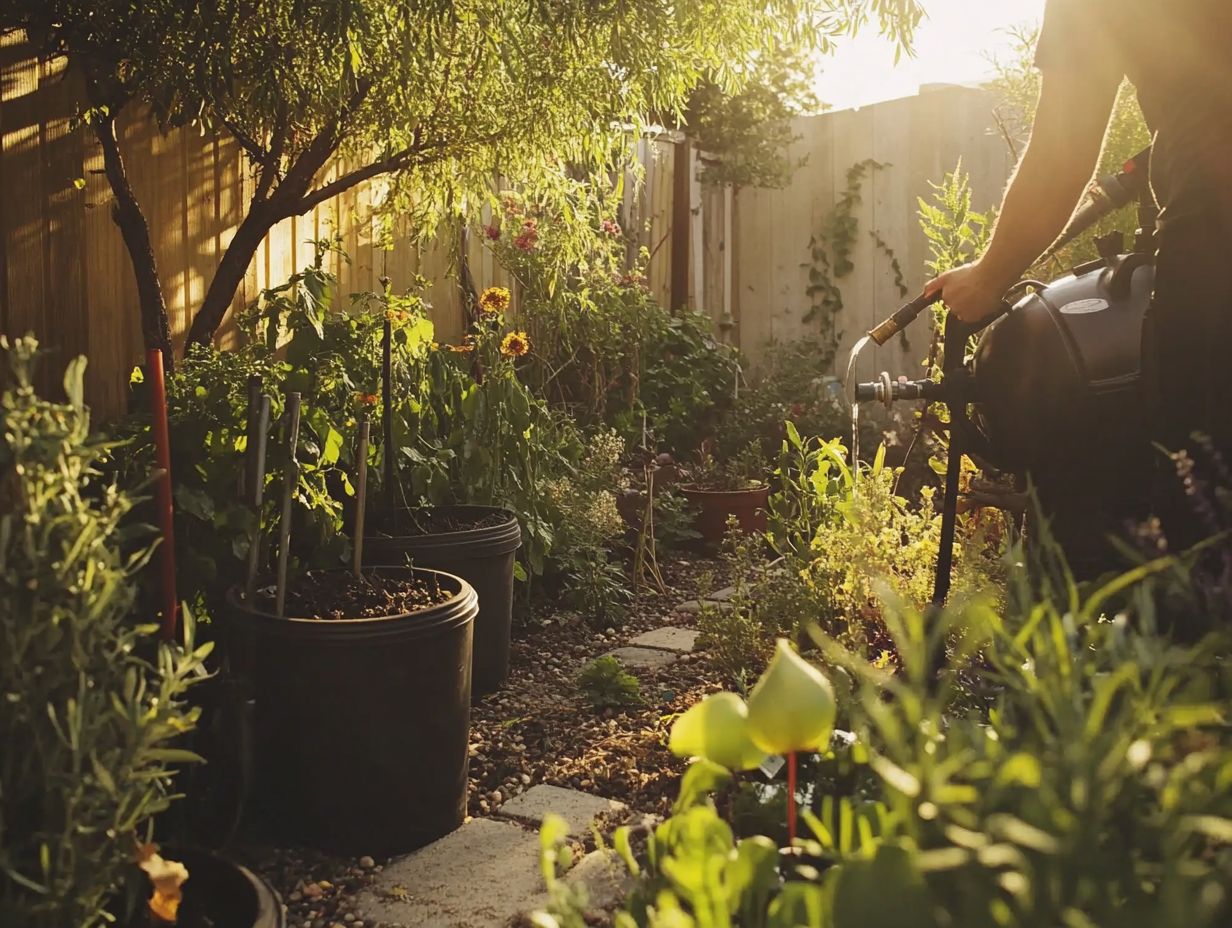
Greywater can be used in drought gardening as a sustainable and eco-friendly way to water your plants and conserve water by utilizing household water that has already been used for washing or bathing. Consider implementing greywater systems for garden use instead of sending it down the drain.
What are the benefits of using greywater in drought gardening?
- Reduces water shortages.
- Conserves resources.
- Saves money on your water bill.
- Provides nutrients to plants.
How do I collect greywater for my garden?
You can collect greywater in a variety of ways, such as using a watering can or a bucket to catch household water from the shower or placing a basin under the faucet while washing dishes. There are also more advanced greywater systems that can collect and filter greywater for use in your garden.
What plants can I water with greywater?
Greywater is safe to use on most plants, except for edible crops, root vegetables, or plants that are sensitive to salts. It is best used on flowers, shrubs, and non-edible plants. It is important to avoid using greywater on plants that may be in direct contact with food.
Do I need to treat greywater before using it in my garden?
Greywater should be treated before use to remove any harmful contaminants, bacteria or chemicals. This can be done through filtration and disinfection methods, such as using a greywater treatment system or adding chlorine bleach or hydrogen peroxide to the water.
Are there any precautions I should take when using greywater in my garden?
It is important to be cautious when using greywater in your garden. Avoid getting it on your skin or in your mouth, and always wash your hands after handling greywater. It is also recommended to alternate between using greywater and tap water to prevent build-up of salts or chemicals in the soil, ensuring optimal soil health for your plants’ growth.


